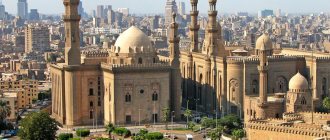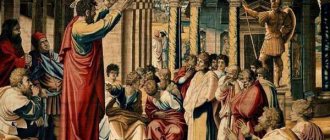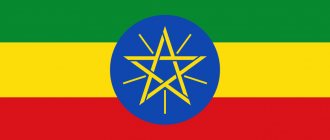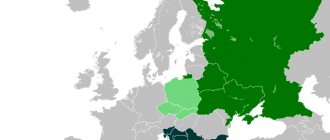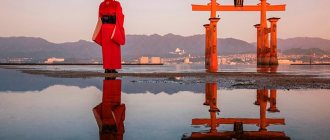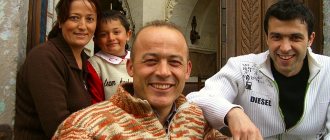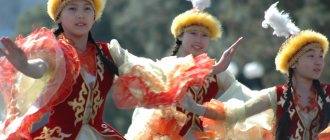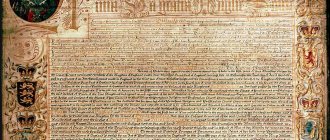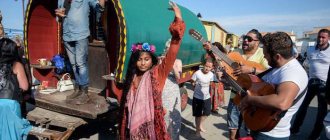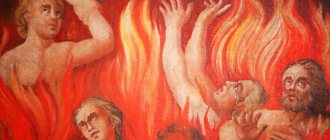In 1641, the famous Russian explorer Semyon Dezhnev took as his wife the daughter of the toyon of the Borogonsky ulus, Onokoya (Yenekeyu), the Yakut Abakayada (Abakay da Syuchyu).
From that moment on, many local residents in Yakutia began to accept Orthodoxy. Dezhnev then went to Kolyma and did not return to his wife. Local legend says that Abakayada bore him a son, Lyubim, and also waited for her husband for 20 years.
Nowadays, more than a hundred religious communities are registered on the territory of the Republic of Yakutia (Sakha), including followers of the national religion Aar Aiyy and Orthodoxy.
Where do the Yakuts live?
Most of the population lives in the Republic of Sakha (Yakutia), whose population is just shy of one million people. More than 500 thousand of them are indigenous people. You can also meet Yakuts in the Magadan and Irkutsk regions and in the Khabarovsk Territory. Some of them live in Kamchatka.
Almost a third of the population lives in the capital of the republic - Yakutsk. However, the proportion of urban residents is small; mostly Yakuts prefer the countryside and live in single-ethnic villages.
In addition to Orthodoxy, other faiths are represented in Yakutia
In the Republic of Yakutia (Sakha) there are other religious communities besides Orthodoxy and neo-paganism. Without considering them, it is impossible to answer the question: what religion is popular among the Yakuts in Russia.
So in Yakutia there are Old Believer communities. In Yakutsk there is a temple of the Russian Orthodox Old Believer Church in the name of the Supreme Apostles Peter and Paul (part of the diocese of Ussuri and the Far East).
Mosque in Yakutsk. The mosque in Yakutsk was built by immigrants from Central Asia and the North Caucasus. Photo: upload.wikimedia.org
The Old Believers, like other non-mainstream faiths, appeared in Yakutia during tsarist times along with exiles and convicts. For example, the Poles brought Catholicism here at the beginning of the 20th century.
Yakutsk is assigned to the Diocese of St. Joseph in Irkutsk of the Roman Catholic Church.
There is a mission of the Salesians of Don Bosco in the city; The parish of “Christ - the Sun of Truth” (founded in 1993) is located in a modern church building. The Yakut deanery also includes parishes in Aldan and Neryungri.
In Yakutsk there are the northernmost mosque and datsan in Russia.
On September 23, 2005, the northernmost mosque in Russia opened in Yakutsk. Its parishioners are former and current prisoners of local colonies originally from the North Caucasus and Central Asia.
On October 1, 2014, Datsan opened in Yakutsk, the opening was attended by the head of the Buddhist Traditional Sangha of Russia Damba Ayushev - XIV Pandito Khambo Lama. It is the northernmost datsan in the world.
In addition, there are also Protestant communities and the Armenian Church “Surb Karapet” of the New Nakhichevan and Russian Diocese of the Armenian Apostolic Church.
By leaving a comment, you accept the user agreement
A little about the language
There are two official languages in the Sakha Republic: Yakut and Russian. The first of them belongs to the Turkic group, but has many borrowings from the Mongolian and Russian languages, as well as vocabulary of unknown origin.
Bilingualism is common among the indigenous population; 2/3 of the residents speak Russian fluently.
The Yakut language is used in everyday life, and office work is conducted in it. Books, newspapers and magazines are published. Television programs are produced.
The Cyrillic alphabet with some additions is adopted as the alphabet.
Depending on where they live, the population uses several dialects: Central, Vilyui, Taimyr and Northwestern.
Folklore
The ancient epic Olonkho is passed down from generation to generation and is similar in performance to opera. This is the oldest epic art of the Yakuts, which occupies the most important place in the folklore of the people. Olonkho denotes an epic tradition and serves as the name of individual tales. Poems 10,000-15,000 lines long are performed by folk storytellers, which not everyone can become. The narrator must have oratory and acting talent, and be able to improvise. Large olonkhos can take 7 nights to complete. The largest such work consists of 36,000 poetic characters. In 2005, Olonkho was declared by UNESCO “a masterpiece of the intangible and oral heritage of humanity.”
Yakut folk singers use the dyeretii yrya type of throat singing. This is an unusual singing technique whose articulation is based in the larynx or pharynx.
The most famous of the Yakut musical instruments is the khomus - a Yakut type of harp and a bowed string instrument. They play it with their lips and tongue.
Religion
In ancient times, the main religion of the local population was Tengrism. According to him, all Yakuts are children of the god Tanar, surrounded by the upper world, where angels (ayyy) live, and the lower world, which is inhabited by demons (abasy).
Later, Tengrism was reborn into the Aiy religion, which included most of the old customs and traditions.
The Yakuts became part of the Russian state at the beginning of the 17th century, and by the 18th century the Christianization of the local population, as well as the majority of the indigenous inhabitants of the Lena River basin - the Evenks, Dolgans and Yukaghirs, had occurred.
However, the mass adoption of Christianity was largely formal, and even those who accepted Orthodoxy remained faithful to ancient customs for a long time.
Today the main religion of the republic is Orthodoxy, but there are also adherents of the traditional faith. Shamans are still highly respected.
Ysyakh Tuymaada holiday: extract of Yakut traditions in 1 day
Ysyakh Tuymaada is an annual holiday of Yakutia, which is celebrated on an unprecedented scale by the entire republic on the day of the summer solstice. This is a kind of Yakut New Year: on the day of Ysyakh, the border between the past and the future is symbolically drawn.
Ysyakh Tuymaada has deep pagan roots. On this day, the Yakuts praise the deity of the sun and the awakening of nature. First, a purification ritual is performed with the help of smoke and a special broom made from a horse's tail - deybiira. Later, people gather for mass prayer, repeating sacred words in unison and stretching out their hands to the sky.
Ysyakh Tuymaada
Like any holiday, Ysyakh is accompanied by fun and folk festivities. Favorite entertainments include tournaments in hapsygai, a national Yakut martial arts, and mas-wrestling, a tug-of-war tournament included in the All-Russian Register of Sports.
Of course, the main Yakut holiday is impossible without an animal sacred to the Sakhi people - the horse. On Ysyakh they organize races and exhibitions of Yakut horses, drink kumiss, and also install traditional Yakut hitching posts - serge posts, which are believed to be used by the gods for their horses. The serge themselves, in addition to their practical purpose, are also a symbol of the tree of life, uniting three worlds - the upper divine, the middle human, the lower - the abode of underground spirits. It is customary to tie ribbons to serge when making wishes.
The culmination of the holiday is the mass round dance Osuokhai: repeating the movement of the sun's disk in the sky, the Yakuts spin to the ritual singing of the chief shaman, glorifying the heavenly spirits. The dance is reminiscent of large-scale meditation or even trance, after which there certainly comes a feeling of absolute renewal and unity of the people.
Today, the largest celebration is held in the historical place of Us-Khatyn, not far from Yakutsk. More than 15 thousand Yakuts gather here, as well as many tourists, for whom the holiday allows them to immerse themselves in the culture of Sakha.
Where do the Yakuts live: climatic features
These places are characterized by a sharply continental climate, with very long winters and short summers. In winter, the temperature rarely rises above -50°C, and sometimes drops to -70°C. By the way, this is where the village of Oymyakon is located, which has long been considered a pole of cold. The minimum temperature recorded at this location was -71.2°C.
By the way, sub-zero temperatures can persist for up to 9 months a year. Despite this, summers are most often hot, the air can warm up to 30°C.
Thus, the temperature difference is from 75 to 90°C. In particular, in such climatic conditions, the quality of housing becomes of great importance.
Housing
The Yakuts trace their ancestry back to nomadic tribes. That's why they live in yurts. However, unlike the Mongolian felt yurts, the round dwelling of the Yakuts is built from the trunks of small trees with a cone-shaped steel roof. There are many windows in the walls, under which sun loungers are located at different heights. Partitions are installed between them, forming a semblance of rooms, and a smear hearth is tripled in the center. In the summer, temporary birch bark yurts - uras - can be erected. And since the 20th century, some Yakuts have been settling in huts.
Winter settlements (kystyk) were located near the meadows, consisting of 1-3 yurts, summer settlements - near pastures, numbering up to 10 yurts. The winter yurt (booth, diie) had sloping walls made of standing thin logs on a rectangular log frame and a low gable roof. The walls were coated on the outside with clay and manure, the roof was covered with bark and earth on top of the log flooring. The house was placed in the cardinal directions, the entrance was located on the east side, the windows were on the south and west, the roof was oriented from north to south. To the right of the entrance, in the north-eastern corner, there was a fireplace (osoh) - a pipe made of poles coated with clay, going out through the roof. Plank bunks (oron) were arranged along the walls. The most honorable was the southwestern corner. The master's place was located near the western wall. The bunks to the left of the entrance were intended for male youth and workers, and to the right, by the fireplace, for women. A table (ostuol) and stools were placed in the front corner. On the northern side of the yurt a stable (khoton) was attached, often under the same roof as the living quarters; the door to it from the yurt was located behind the fireplace. A canopy or canopy was installed in front of the entrance to the yurt. The yurt was surrounded by a low embankment, often with a fence. A hitching post was placed near the house, often decorated with carvings. Summer yurts differed little from winter ones. Instead of a hoton, a stable for calves (titik), sheds, etc. were placed at a distance. There was a conical structure made of poles covered with birch bark (urasa), in the north - with turf (kalyman, holuman). Since the end of the 18th century, polygonal log yurts with a pyramidal roof have been known. From the 2nd half of the 18th century, Russian huts spread.
Dwelling of the Yakuts
Traditional housing of the Yakuts
Until the beginning of the 20th century, the home of the Yakuts was the so-called Yakut yurts. They were built in a low, sheltered position from round logs set at an angle of seventy degrees. The place was chosen carefully, with the help of a shaman.
Sometimes yurts were collapsible, since they were easier to transport during nomadic migrations.
A typical Yakut settlement consists of several yurts located at a distance from each other.
But today they mostly build not yurts, but huts.
Distribution area
The distribution of Yakuts across the territory of the republic is extremely uneven. About nine of them are concentrated in the central regions - in the former Yakutsk and Vilyuisk districts. These are the two main groups of the Yakut people: the first of them is slightly larger in number than the second. The “Yakut” (or Amga-Lena) Yakuts occupy the quadrangle between the Lena, lower Aldan and Amga, the taiga plateau, as well as the adjacent left bank of the Lena. The “Vilyui” Yakuts occupy the Vilyui basin. In these indigenous Yakut areas, the most typical, purely Yakut way of life developed; here, at the same time, especially on the Amga-Lena Plateau, it is best studied. The third, much smaller group of Yakuts is settled in the Olekminsk region. The Yakuts of this group became more Russified; in their way of life (but not in language) they became closer to the Russians. And finally, the last, smallest, but widely dispersed group of Yakuts is the population of the northern regions of Yakutia, i.e., the river basins. Kolyma, Indigirka, Yana, Olenek, Anabar.
The Northern Yakuts are distinguished by a completely unique cultural and everyday way of life: in relation to it, they are more like the hunting and fishing small peoples of the North, the Tungus, the Yukagirs, than their southern fellow tribesmen. These northern Yakuts are even called “Tungus” in some places (for example, in the upper reaches of Olenek and Anabara), although by language they are Yakuts and call themselves Sakha.
Where do the Yakuts live and what do they do?
For the local population, horse breeding and cattle breeding were traditional occupations. They also bred deer. Fishing was well developed.
Yakut hunting for game
In the northern regions they were engaged in hunting. In particular, the game included hares, arctic foxes, moose and deer. But with the arrival of the Russians they began to hunt bears.
By the way, agriculture was poorly developed and began to develop only in the 19th century. Most often barley was grown, sometimes wheat.
Among the popular crafts were, for example:
- wood carving;
- molded ceramics;
- leather dressing and production of products from it.
By the way, local craftsmen knew how to mint silver, copper and other metals.
Appearance
The Yakuts of a pure race have an oval face shape, a wide and smooth, low forehead, black eyes with slightly slanted eyelids. The nose is straight, often with a hump, the mouth is large, the teeth are large, and the cheekbones are moderate. The complexion is dark, bronze or yellow-gray. The hair is straight and coarse, black.
Cloth
The national costume of the Yakuts combines the traditions of different peoples; it is perfectly adapted to the harsh climate in which these people live. This is reflected in the cut and design of clothes. The suit consists of a caftan with a belt, leather pants and fur socks. Yakuts wear a belt around their shirts. In winter they wear boots made of deerskin and fur.
The main ornament of clothing is the lily-syandana flower. The Yakuts try to combine all the colors of the year in their clothes. Black is a symbol of earth and spring, green is summer, brown and red are autumn, silver jewelry symbolizes snow, stars and winter. Yakut patterns always consist of branched continuous lines, which mean that the lineage should not stop. The more branches such a line has, the more children the person who owns the clothing has.
Various furs, jacquard silk, cloth, leather and rovduga are used in tailoring outerwear. The costume is decorated with beads, ornamental inserts, metal pendants and decorations.
The poor sewed underwear and summer clothes from thin suede leather, the rich wore shirts made from Chinese cotton fabric, which was expensive and could only be obtained through in-kind exchange.
Festive clothing of the Yakuts has a more complex cut. The waist is widened at the bottom, and the sleeves have a gathered edge. These sleeves are called buuktaakh. Lightweight caftans had an asymmetrical fastener and were generously decorated with beaded embroidery, a narrow strip of expensive fur and metal elements. Only the wealthy wore such clothes.
One of the wardrobe items of the Yakuts are robe-like items, sewn from daba fabric with one-piece sleeves. Women wore it in the summer. The Yakut hat looks like a fireplace. A hole was usually made at the top so that the moon and sun could peer in. The ears on the hat represent a connection with the cosmos. Today they are usually decorated with beads.
National cuisine
Traditionally, Yakut cuisine includes venison, horse meat and beef. By the way, Siberian fish are also used for food: sturgeon, omul, grayling.
Vegetables and fruits are practically not found, but sometimes fresh berries are added to the dish.
Popular are stroganina - freshly frozen meat or fish, sprinkled with hot sauce, as well as yogos - raw or frozen meat from horse ribs.
Yakuts drink kumiss and love hot fruit juice. Curdled milk, cream and thick cream are prepared from cow's milk.
Cloth
Traditional men's and women's clothing - short leather trousers, fur belly, leather leggings, single-breasted caftan (sleep), in winter - fur, in summer - from horse or cow hide with the hair inside, for the rich - from fabric. Later, fabric shirts with a turn-down collar (yrbakhy) appeared. Men girded themselves with a leather belt with a knife and a flint; for the rich, with silver and copper plaques. A typical women's wedding fur caftan (sangiyakh), embroidered with red and green cloth and gold braid; an elegant women's fur hat made of expensive fur, descending to the back and shoulders, with a high cloth, velvet or brocade top with a silver plaque (tuosakhta) and other decorations sewn onto it. Women's silver and gold jewelry is common. Shoes - winter high boots made of deer or horse skins with the hair facing out (eterbes), summer boots made of soft leather (saars) with a boot covered with cloth, for women - with appliqué, long fur stockings.
Marriage traditions
Until the 19th century, polygamy existed here. However, the wives ran their own households and lived separately from their husbands.
But today polygamy is prohibited by law. You can get married at the age of 16.
There is still a tradition of bride price, but if previously the usual bride price was cattle, today it is money. If the groom's family cannot raise a sufficient amount, then the bride is simply kidnapped, and then they work off their debt by helping the wife's family.
The share of interethnic marriages is small, although historically the Yakuts married both Tungusic peoples and Russians.
